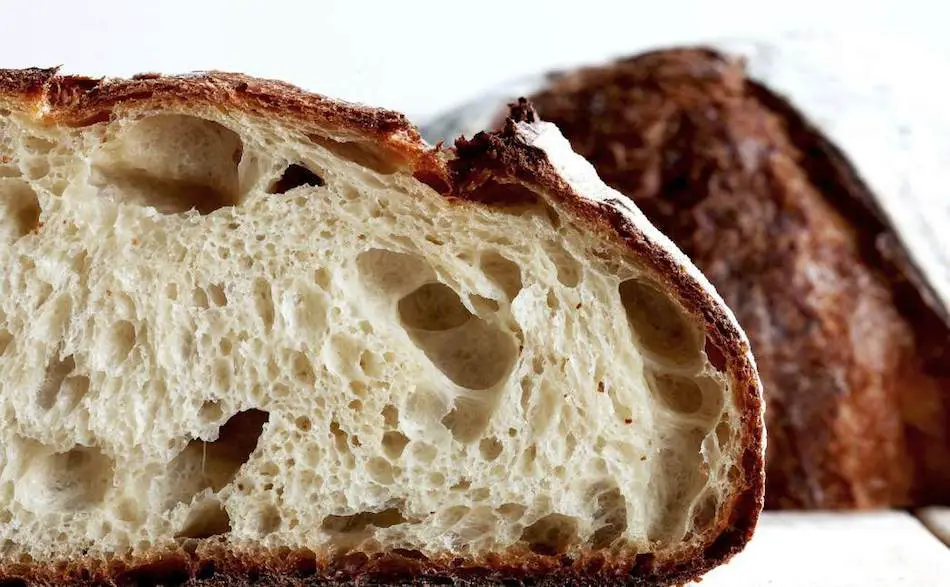
One of the defining characteristics of a good sourdough loaf is the presence of large, airy holes, which are the result of a careful and precise combination of techniques and conditions. In this article, we will delve into the world of sourdough holes, exploring the science behind why they appear, and offering tips and techniques for creating the perfect loaf with big, beautiful holes.
The appearance of holes in sourdough is caused by the formation of carbon dioxide (CO2) during the fermentation process. CO2 is produced by the yeast and bacteria in the sourdough starter as they break down the sugars in the flour, and the holes in the bread occur as the CO2 gets trapped within the gluten structure of the dough. The size of the holes in sourdough can be influenced by a variety of factors, including the hydration level of the dough, the strength of the sourdough starter, the temperature and humidity of the fermentation environment, and the technique used to shape and proof the dough. To make sourdough with big holes, bakers may use a wetter dough, a more active starter, and a longer fermentation time. To make sourdough without holes, bakers may use a drier dough, a weaker starter, and a shorter fermentation time, or they may shape and proof the dough in such a way as to eliminate as much of the CO2 as possible.
Are Holes in Sourdough Good or Bad?
The presence of holes in sourdough is not inherently good or bad. It depends on personal preference and the intended use of the bread.
Holes in sourdough can be seen as desirable by many bread enthusiasts and bakers, as they are associated with a more traditional, artisanal style of bread-making. The larger holes can also help to create a lighter, airier texture in the bread.
However, some bakers and bread-lovers may prefer a denser, closed-crumb texture, and thus may consider the presence of holes in sourdough to be undesirable.

How Big should the Holes in Sourdough Be?
The size of the holes in sourdough can vary greatly, depending on various factors such as the hydration level of the dough, the strength of the sourdough starter, the temperature and humidity of the fermentation environment, and the technique used to shape and proof the dough.
In general, large, airy holes are considered to be desirable in sourdough bread, as they are associated with a more traditional, artisanal style of bread-making. These large holes can also help to create a lighter, airier texture in the bread.
However, the size of the holes can also be influenced by personal preference, as well as the intended use of the bread. For example, a tight, closed crumb may be preferred for certain applications, such as sandwiches or toast.
The Science Behind Sourdough Holes
As a bread making enthusiast, I’ve always been fascinated by the magic of sourdough bread. It’s a living, breathing thing, and every loaf is unique, with its own distinctive flavor, texture, and appearance. And one of the defining characteristics of a great sourdough loaf is the presence of big, beautiful holes. But what exactly is the science behind these holes, and how can we use it to our advantage in the kitchen?
At its core, the science of sourdough holes is all about understanding the interplay between yeast, gluten, and air. Yeast, the tiny organisms responsible for leavening the bread, produce carbon dioxide as they consume sugars in the dough. This carbon dioxide gets trapped in the gluten network, creating the pockets of air that we know as holes. The bigger the holes, the more yeast that has been produced, and the lighter and airier the bread will be.
To get big holes in your sourdough bread, you need to create the right conditions for yeast to thrive. This means using a high-quality sourdough starter, paying close attention to fermentation times, and ensuring that the dough is properly handled and shaped. You also need to be patient, giving the yeast enough time to produce enough carbon dioxide to create the desired hole structure.
In the end, the science behind sourdough holes is just one part of the puzzle. It’s a fascinating subject, but it’s only by combining your knowledge with intuition, experience, and a healthy dose of creativity that you’ll be able to create the perfect sourdough loaf, with big, beautiful holes that are the mark of a true artisan baker.
Factors that Affect Sourdough Hole Formation
- Yeast strain and fermentation conditions
- Gluten strength, structure, and amount
- Dough hydration level
- Shaping and baking of the dough
- Yeast strain and fermentation conditions: play a big role in determining the size and distribution of the holes
- Gluten: acts as a structure to hold the gas produced by yeast, impacting the formation of holes
- Dough hydration level: more hydrated dough results in larger holes, while drier dough produces smaller holes
- Shaping and baking: shape of the loaf and oven environment impact the distribution and size of the holes
- Understanding these key elements can lead to creating the perfect loaf with holes that are just the way you like them.
Whether you like them big or small, the holes are an integral part of the sourdough experience. So what factors can impact the formation of these holes? Let me break it down for you.
First and foremost, it’s all about the yeast. The yeast in your sourdough starter produces carbon dioxide as it ferments the dough, and it’s this carbon dioxide that creates the pockets of air that we know as holes. So the yeast strain you use, and the conditions under which it ferments, can play a big role in determining the size and distribution of the holes in your sourdough.
Next up, there’s the gluten. The gluten in the dough acts as a structure to hold the gas produced by the yeast, so the gluten strength, structure, and amount can impact the formation of the holes.
Another important factor is the dough’s hydration level. The more hydrated your dough, the more flexible and extensible it will be, which can lead to larger holes. Conversely, a drier dough will tend to produce smaller holes.
Finally, there’s the way you shape and bake the dough. The shape of your loaf, and the oven environment, can impact the distribution and size of the holes in your sourdough. A tight shape will result in smaller holes, while a looser shape will encourage bigger holes.
The Role of Yeast and Bacteria in Sourdough Hole Formation
Yeast and bacteria play a critical role in the formation of holes in sourdough bread. Yeast produces carbon dioxide as it ferments the dough, creating pockets of air which are the holes. The bacteria in the sourdough starter work together with the yeast to ferment the dough, leading to a tangy flavor and unique texture. The yeast strain, fermentation conditions, gluten strength and amount, dough hydration level, and shaping and baking methods all impact the formation of holes in sourdough bread.
Understanding these key elements can help bakers achieve the perfect loaf with holes that are just the way they like them.
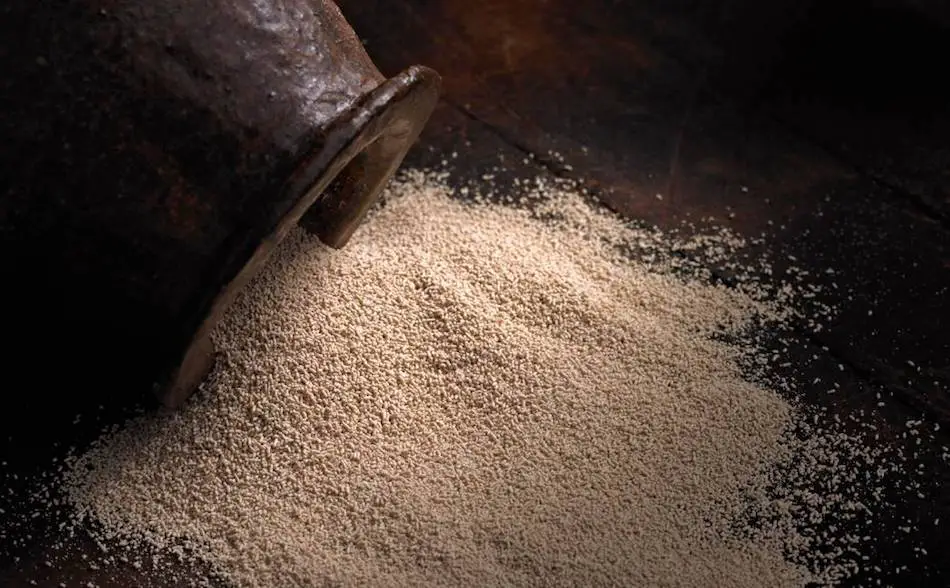
The Importance of Hydration in Sourdough Hole Formation
Hydration level is an important factor in the formation of holes in sourdough bread. The more hydrated the dough, the more flexible and extensible it will be, leading to larger holes. Conversely, a drier dough will tend to produce smaller holes. Proper hydration not only affects the size of the holes but also the overall structure and texture of the bread.
Bakers must carefully measure and control the hydration level of their dough to ensure the desired hole size and texture in the final product. Proper hydration is an essential part of the sourdough baking process and plays a critical role in determining the success of the loaf.
The Effect of Mixing and Kneading on Sourdough Hole Formation
The mixing and kneading of sourdough dough can play a significant role in determining the size and distribution of the holes in the final product. Proper mixing and kneading help to develop the gluten structure of the dough, which acts as a scaffold for the carbon dioxide produced by the yeast during fermentation. The development of an optimal gluten structure helps to maintain a consistent distribution and size of holes in the finished loaf. Over-kneading, on the other hand, can lead to a dense and tight gluten structure, resulting in smaller and fewer holes.
It is important to note that while mixing and kneading are important factors in hole formation, they are only one piece of the puzzle and must be balanced with other factors such as yeast activity, hydration levels, and shaping and baking techniques.
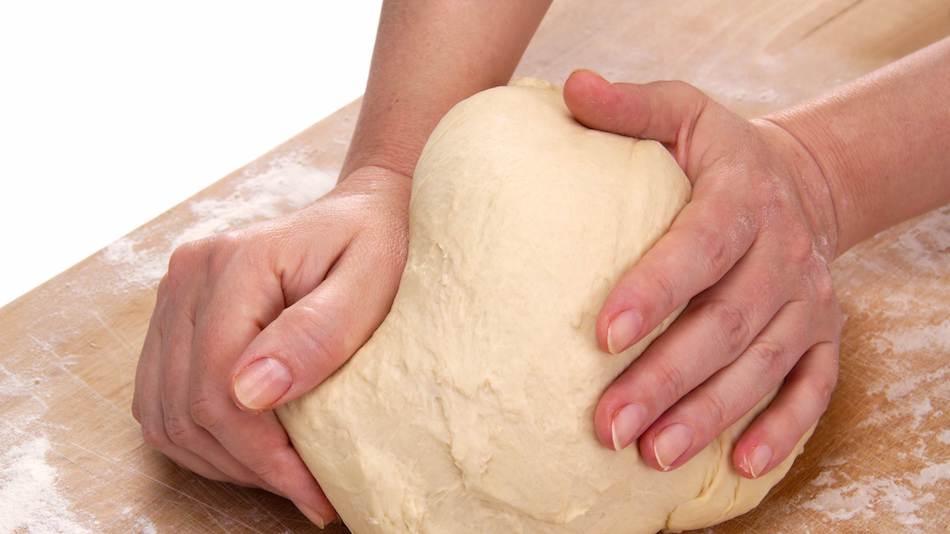
How to Knead Dough-Step-by-Step
- Start with a well-hydrated dough. Your sourdough should feel soft and pliable, but not too sticky.
- Flour your work surface and your hands, and then turn the dough out onto the surface.
- Using the heels of your hands, press down and push the dough away from you. Then, fold the dough back onto itself, rotate it a quarter turn, and repeat the process.
- Knead the dough for 8-10 minutes, or until it becomes smooth, elastic, and springs back when you press your finger into it.
- If the dough becomes too sticky during the kneading process, add more flour to your work surface and hands, and continue kneading until the desired texture is achieved.
- Place the kneaded dough in a lightly oiled bowl, cover it with a damp cloth, and let it rest for 30 minutes to an hour, or until it has doubled in size.
- After the dough has rested, it’s time to shape and proof it before baking.
The Impact of Fermentation Time on Sourdough Hole Formation
Fermentation time plays a crucial role in sourdough hole formation. As yeast ferments the dough, it produces carbon dioxide, which creates pockets of air that result in holes. The longer the dough ferments, the more yeast will produce carbon dioxide, and the more holes will be created. However, it is important to note that over-fermentation can lead to a collapse of the dough structure and result in smaller or fewer holes.
So, finding the right balance of fermentation time is essential in achieving the desired level of hole formation in sourdough bread. Additionally, factors such as temperature and the presence of other microorganisms can impact the speed and efficiency of fermentation, which can also affect hole formation.
The Influence of Baking Temperature on Sourdough Holes
The baking temperature plays a crucial role in determining the size and distribution of the holes in sourdough bread. During baking, the yeast in the dough continues to produce carbon dioxide, causing the dough to rise. The high temperature of the oven sets the dough, creating the final shape of the loaf and the size of the holes. If the oven temperature is too low, the yeast may continue to produce gas, causing the loaf to rise too much and creating large, irregular holes.
Also, a high oven temperature can cause the dough to set too quickly, preventing the yeast from producing enough carbon dioxide and resulting in small, tight holes. Thus, controlling the baking temperature is important in achieving the desired size and distribution of holes in sourdough bread.
The Significance of Shaping and Proofing on Sourdough Hole Formation
Shaping and proofing play a significant role in sourdough hole formation. The shape of the dough and the way it is handled before baking can impact the distribution and size of the holes. A tight shape will result in smaller holes, while a looser shape will encourage bigger holes. Also, the proofing process, or the amount of time the dough rises before baking, can also impact the formation of the holes. A longer proofing time can lead to larger, more well-formed holes, as the yeast has more time to ferment the dough and produce carbon dioxide. Proper shaping and proofing can be essential for achieving the desired hole structure in a sourdough loaf.
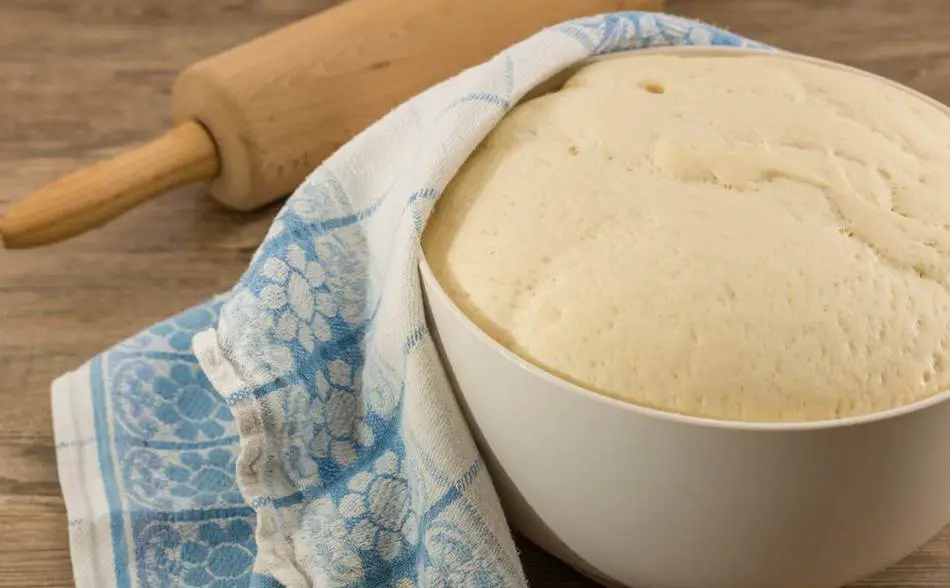
The Impact of Baking Time and Duration on Sourdough Hole Formation
The impact of baking time and duration on sourdough hole formation is significant. The baking process is a critical stage in the creation of sourdough bread, as it affects the final texture and appearance of the loaf. The baking temperature, which is typically high, causes the dough to expand and produce steam, leading to the formation of holes in the bread. The length of time the bread is baked also influences the size and distribution of the holes, as a longer baking time will result in the dough becoming fully set, leading to smaller holes, while a shorter baking time may produce larger holes. It is important to carefully monitor the baking time and temperature to achieve the desired outcome for the sourdough holes.
The Role of Steam in Sourdough Hole Formation
The role of steam in sourdough hole formation is crucial in creating a desirable crumb structure in the final baked loaf. Steam is generated in the oven through the introduction of water, which can come from a variety of sources including a spray bottle or a tray of water placed at the bottom of the oven. The steam helps to create an environment that is conducive to the expansion of the dough during the initial stages of baking, when the yeast is still active and producing carbon dioxide. As the heat continues to increase, the moisture in the dough evaporates, causing the dough to set and the holes to stabilize. This results in a loaf with a chewy texture, good crust formation, and an aesthetically pleasing distribution of holes.
The Impact of Oven Spring on Sourdough Hole Formation
The equipment and baking method used to bake sourdough can have a significant impact on the formation of holes. For example, using a Dutch oven or cloche to bake sourdough can help trap steam, which in turn can lead to larger and more irregularly shaped holes. On the other hand, baking sourdough in a standard metal loaf pan can result in smaller, more uniform holes. Additionally, the type of oven used, whether it be a wood-fired oven, a conventional oven, or a convection oven, can also affect the formation of holes. Convection ovens, for example, are known to produce more consistent and uniform holes, while wood-fired ovens often produce larger and more irregular holes due to their unique heating characteristics.
The Influence of Equipment and Baking Method on Sourdough Hole Formation
The equipment and baking method used to bake sourdough can have a significant impact on the formation of holes. For example, using a Dutch oven or cloche to bake sourdough can help trap steam, which in turn can lead to larger and more irregularly shaped holes. On the other hand, baking sourdough in a standard metal loaf pan can result in smaller, more uniform holes. Additionally, the type of oven used, whether it be a wood-fired oven, a conventional oven, or a convection oven, can also affect the formation of holes. Convection ovens, for example, are known to produce more consistent and uniform holes, while wood-fired ovens often produce larger and more irregular holes due to their unique heating characteristics.
The Role of Gluten in Sourdough Hole Formation
The gluten present in the dough plays a crucial role in sourdough hole formation. Gluten acts as a structure to hold the gas produced by yeast during fermentation, thus determining the size and distribution of the holes. The gluten strength, structure, and amount can affect the formation of the holes, with a higher amount of gluten resulting in a tighter structure and smaller holes, while a lower amount of gluten producing a looser structure and larger holes.
Also, the mixing and kneading process can also impact the formation of gluten, thus affecting the final structure of the dough and the size of the holes. Therefore, understanding the role of gluten in sourdough hole formation is important in achieving the desired texture and hole size in sourdough bread.
The Importance of Sourdough Starter Health on Hole Formation
Sourdough starter health is a crucial factor in determining the formation of holes in sourdough bread. The yeast and bacteria in a healthy sourdough starter produce carbon dioxide as they ferment the dough, leading to the creation of pockets of air in the loaf. If the sourdough starter is weak or unhealthy, the yeast and bacteria may not produce enough carbon dioxide, resulting in a denser loaf with smaller or fewer holes. The health of the sourdough starter can be affected by various factors such as temperature, feeding schedule, and exposure to contaminants. To maintain a healthy starter and promote optimal hole formation, it is important to regularly feed and store the sourdough starter under ideal conditions.
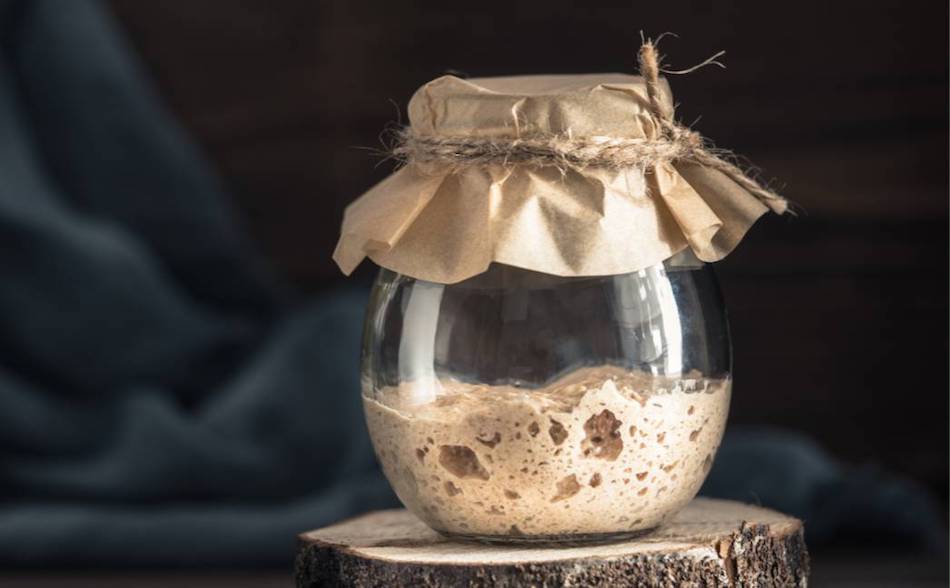
How to Make Sourdough with Large Holes
| Ingredients | Amount |
|---|---|
| All-Purpose Flour | 500g |
| Water | 300g |
| Mature Sourdough Starter | 100g |
| Salt | 10g |
| Steps | Description |
|---|---|
| 1 | Mix the flour, water, and sourdough starter in a large mixing bowl until a shaggy dough forms. |
| 2 | Cover the bowl with plastic wrap and let the dough rest for 30 minutes to 1 hour, to allow the flour to absorb the water. |
| 3 | Sprinkle the salt over the surface of the dough and knead it into the dough by hand or using a stand mixer. The goal is to develop a smooth, elastic dough that passes the “windowpane test”. |
| 4 | Place the dough back into the mixing bowl, cover with plastic wrap, and let it ferment for 4-8 hours, or until it has doubled in size. |
| 5 | Preheat your oven and baking stone or Dutch oven to 450°F (230°C) for at least 30 minutes. |
| 6 | Turn the dough out onto a floured surface and shape it into a round loaf. Place the shaped loaf onto a piece of parchment paper and cover it with a clean kitchen towel. |
| 7 | Let the loaf proof for 30 minutes to 1 hour, until it has puffed up slightly. |
| 8 | Use a sharp knife or razor blade to score the top of the loaf. |
| 9 | Carefully transfer the loaf (along with the parchment paper) onto the preheated baking stone or into the preheated Dutch oven. Bake for 30-40 minutes, or until the crust is a rich golden brown and the loaf sounds hollow when tapped. |
| 10 | Remove the loaf from the oven and let it cool on a wire rack for at least 30 minutes before slicing and serving. |

